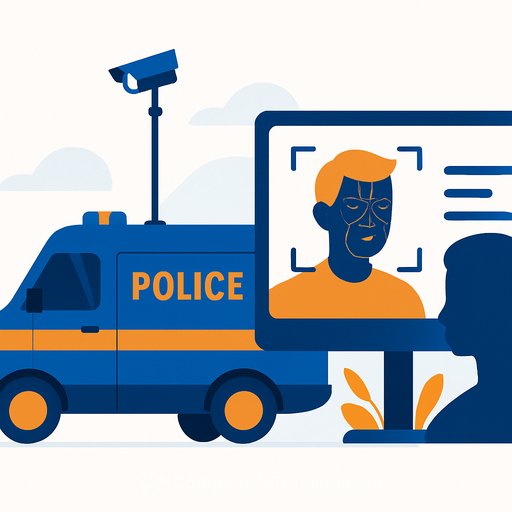Government Expands Use of Facial Recognition Vans Across England
The Home Office is set to increase the deployment of live facial recognition (LFR) vans among seven police forces in England. These vans will assist in identifying suspects involved in serious crimes such as sexual offences, violent assaults, and homicides. Ten new vans equipped with cameras will scan the faces of passersby and cross-check them against watchlists of wanted individuals.
In London, this technology has already contributed to 580 arrests over 12 months, including 52 registered sex offenders who breached their conditions. The government aims to double the current number of LFR vans, extending their use beyond London, Essex, and South Wales to Greater Manchester, West Yorkshire, Bedfordshire, Surrey, Sussex, Thames Valley, and Hampshire.
How the Technology Works
The vans use cameras to measure facial features—such as the distance between the eyes and jawline length—and compare these metrics to a pre-existing watchlist. Each van will be operated by a trained officer responsible for verifying matches flagged by the system.
Consultation on Safeguards
Alongside the rollout, the government has launched a consultation to establish safeguards ensuring transparency and public confidence. This initiative aims to inform a future legal framework governing the use of facial recognition technology.
Concerns and Legal Challenges
Campaign group Big Brother Watch has criticized the expansion, calling it an "alarming" increase in the surveillance state. They are pursuing a legal challenge against the Metropolitan Police’s use of facial recognition, supported by Shaun Thompson, who was wrongly identified by the technology.
Rebecca Vincent, interim director of Big Brother Watch, emphasized the absence of clear legislative authority for this technology and urged the government to halt further expansion until proper legal safeguards are in place.
Labour peer Baroness Chakrabarti highlighted the intrusive nature of facial recognition, warning of privacy risks, threats to freedom of assembly, and the potential for false matches. She pointed out that so far, the technology has been deployed without clear legal guidelines, with police setting their own rules.
Meanwhile, the Information Commissioner’s Office (ICO) noted that facial recognition operates under data protection laws requiring any use of biometric data to be lawful, fair, and proportionate. The ICO monitors police compliance and will soon publish findings on South Wales and Gwent Police’s use of the technology.
Government’s Position on Facial Recognition
Home Office Minister Dame Diana Johnson rejected the notion of a surveillance state. She assured that clear signposting will inform the public when facial recognition is in use, with data retention limited to the deployment period. She described the technology as a valuable policing tool, used in a measured and proportionate manner targeting serious offenders.
Dame Diana acknowledged past use of facial recognition to target ticket touts in Wales but was unsure if this practice continued. She stressed the need for ongoing discussions about how the technology is deployed and welcomed the current consultation.
The government requires officers operating LFR vans to follow the College of Policing’s guidance and the Surveillance Camera Code of Practice. Independent tests by the National Physical Laboratory reportedly found the facial recognition algorithm accurate and unbiased regarding ethnicity, age, or gender at police usage settings.
Support from Think Tanks
Ryan Wain from the Tony Blair Institute described live facial recognition as an effective method to identify violent criminals on police watchlists. He reassured that people not on these lists will have their faces pixelated and data will not be stored.
Additional Police Community Commitment
Alongside the technology rollout, the Home Office has fulfilled a manifesto promise to name a contactable officer in every neighbourhood across England and Wales. Residents can search for their local officer via police websites. These officers have committed to responding to queries within 72 hours, with contact methods determined by individual forces.
Further Information
- Complete AI Training – Explore courses on AI technologies relevant for government and law enforcement professionals.
- Information Commissioner’s Office – Guidance on data protection and biometric data use.
Your membership also unlocks:






